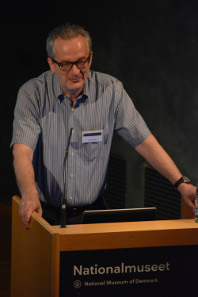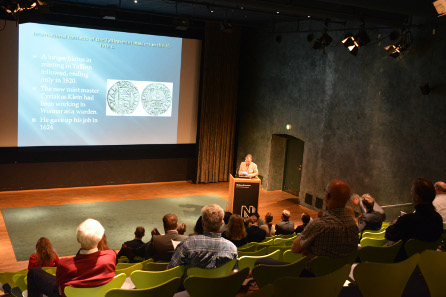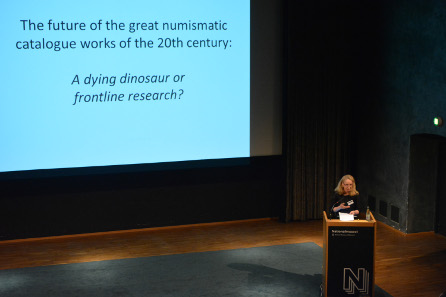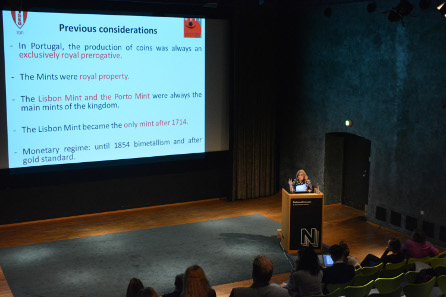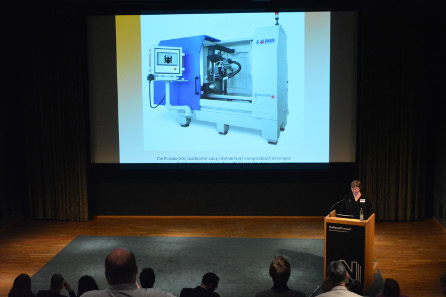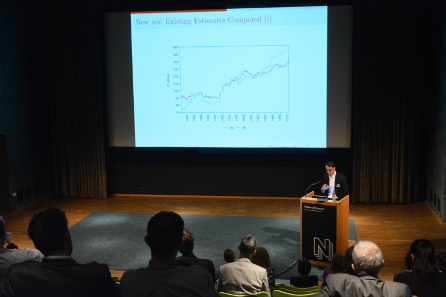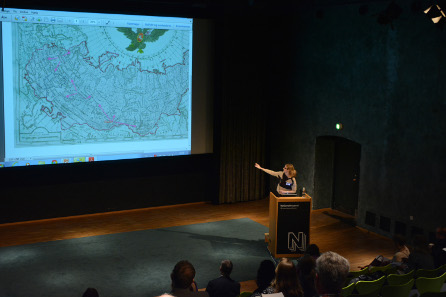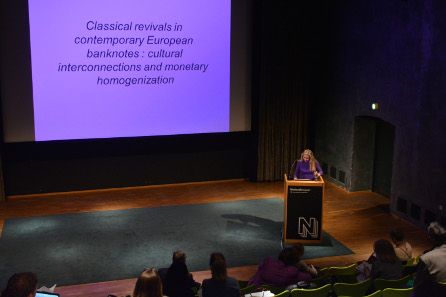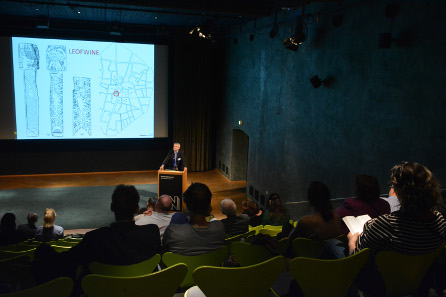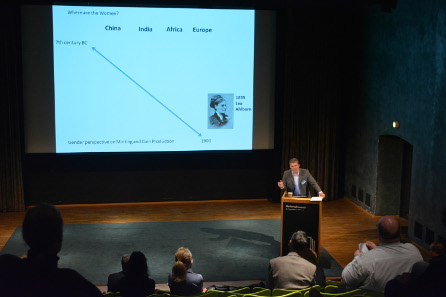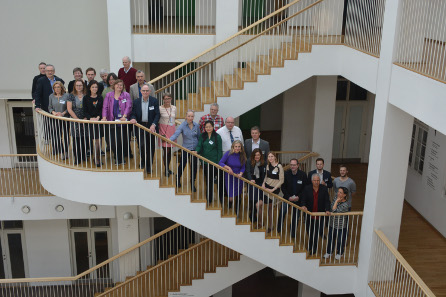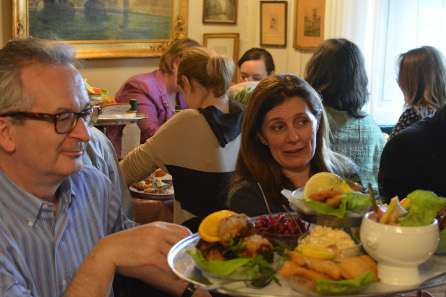by Ursula Kampmann
translated by Annika Backe
June 11, 2015 – DAMIN, the project on silver monetary depreciation and international relations, is a project of a different kind. It provides space for many topics, as long as they are multidisciplinary, international and interesting. The Round Table just held in Copenhagen, in the context of the DAMIN project, proved that DAMIN sees itself as research on the way. Special emphasis is not laid on distinguished professors who follow their approach for decades but on curious researchers, both young and old, from various disciplines and areas, which look at monetary phenomena with wondering eyes and reflect about possible explanations.
Characteristic of DAMIN is not only the enthusiasm of the ones involved but the rigid discipline to which all speakers (must) bow. This does not just mean the exact 20 minutes the speaker is given for his presentation. Six months prior to the conference, every participant hands in an abstract of his contribution and submits the written manuscript likewise before the congress actually takes place. Everybody is responsible for his work. There is no scientific editing. This is the only way to ensure that the proceedings of the meeting, held at the end of May, are published as early as July.
If you are interested in buying the volume: It is published in the MONETA series as no. 191, and orders can already be placed.
The heart and soul of DAMIN: Professor Georges Depeyrot. Photo: Thomas Crognier.
The meeting’s heart and soul was Georges Depeyrot of the French National Centre for Scientific Research. Anyone familiar with numismatic literature will be surprised by that, because his main areas of expertise used to be Roman, Celtic and Merovingian numismatics. He nevertheless acts as spiritus rector of the DAMIN project that focuses on the Modern period.
Dr Michael Märcher, Coin Cabinet Copenhagen. Photo: Thomas Crognier.
The Round Table was organized by the National Museum of Denmark with his renowned Coin Cabinet (or is there anyone who is not familiar with SNG Cop.?). In a professional, charming and hospitable way, Dr Michael Märcher acted as host during the two days which, en passant, also provided a culinary overview of Danish cuisine.
In this article I will give a synopsis of the topics addressed during the meeting. Anybody looking for more detailed information is recommended to visit the DAMIN website with all abstracts written by the authors. All presentations given in Copenhagen will further be available on the internet as early as summer. You will be notified by CoinsWeekly.
Ivar Leimus, Estonian History Museum, Talinn. Photo: Thomas Crognier.
Ivar Leimus from Estonia was the first speaker. He presented a catalog of mint masters from 16th and 17th century Talinn that illustrated the international contacts of those men. They all came from abroad, mainly from Germany, after visiting many other countries, and they left Talinn again, to perform other tasks in other foreign countries.
Viktor Dabolins, National History Museum of Latvia, Riga. Photo: Thomas Crognier.
A mintmaster from Riga was introduced by Viktor Dabolins from Latvia. Although Jost Haltermann served as mintmaster between 1660 and 1663, coins of him are lacking. This is due to the fact that it was the mint’s wardein and mintmaster-to-be, Jochim Meineke, who signed the coininig dies. The speaker provided a small insight into how the Riga city mint operated, in order to explain that phenomenon.
Claudia Jefferies, born in Mexico, studied in Freiburg and Basel, currently City University of London. Photo: Thomas Crognier.
Claudia Jefferies addressed the audience with an open question. While Sergovia had had the coin mill as early as 1583, in Mexico City that technology was introduced as late as 1732. Why did the technology transfer to this corner of the vast Spanish Empire take so long?
The speaker could prove that Mexico simply had no need for the modern coin mill back then because most of the monetary transactions were processed by other means. Those means allowed the dealers, who were likewise responsible for the mint, to obtain much bigger a return.
Dennis Flynn, University of the Pacific, California, and host of the next DAMIN Round Table. Photo: Thomas Crognier.
Dennis Flynn took the participants on a trip through the realm of economic theory. How about money that works on a local level? And is not money that works on an international level something completely different? Anyhow, one statement was clear: It is absolutely impossible to transfer current economic models to historical events. Yet, if there was a better distinction of the different kinds of money… Time was much too short to formulate all implications.
Cecilia von Heijne, The Royal Coin Cabinet, Stockholm. Photo: Thomas Crognier.
Gitte Tarnow Ingvardson and Cecilia von Heijne brought the hoard finds into the discussion. The former took the hoard find of Todarp as illustration of the finding horizon resulting from a Danish invasion in June 1676 and concluded that the different finds, clustered in very small areas, reflect completely different economic realities.
Cecilia von Heijne applied a litmus test: What can we learn about the circulation of coins from a complete inventory of coin finds of a particular area? How did the questions and the answers change over time? In what way can we make use of the catalogs written in earlier times for the questions of our times?
Jin CAO, Department of Chinese and Korean Studies, Tübingen / China. Photo: Thomas Crognier.
A glimpse into a foreign world was provided by Jin CAO who dealt with the cast of cash coins in medieval China. While the history of European technology can only exploit the same quite limited range of illustrations and texts over and over again, medieval China offers a wealth of sources that are just waiting to be interpreted.
How rich Chinese monetary history really is and how little we know about it in this part of the world, became apparent during the presentation of the young academic. She gave very exact details of the process of casting, the organization of mints, the daily coin production and much more.
Rita Martin de Sousa, Lisboa School of Economics and Management, University of Lisbon. Photo: Thomas Crognier.
Rita Martin de Sousa focused on the Lisbon Mint that has always been under direct Royal control. She showed the relation of the monetary changes upon the introduction of the gold standard with the technological changes. The small gold coins with a low weight presented a particular challenge to minting techniques.
Ursula Kampmann. Photo: Thomas Crognier.
It came as a little shock to the present researchers what the author of this article said in her presentation – especially when she contrasted the production number of coins in the past with a modern output. The talk summarized today’s minting techniques. In addition, it critically assessed the techniques’ repercussions for the coins and addressed the reasons why minting is currently heading that way.
You can read the entire presentation as Article of the Week.
Jason Lennard, Lund University. Photo: Thomas Crognier.
How much money had been in circulation in the United Kingdom between 1841 and 1870? What problems does a realistic monthly estimate of the money in circulation pose? The presentation by Sean Kenny and Jason Lennard proved that research needs sound numbers before drawing any conclusions. These numbers are hard to calculate though. The young academics accessed the archives of the Bank of England, the records of the British Parliament and the Royal Mint.
Ekaterina Svirina, Financial University, Moscow. Foto: Thomas Crognier.
Ekaterina Svirina accomplished the feat of working out and describing the complex nexus of the circulation of money in the Russian Empire. Which mint produced which denomination in which period of time, and for what reason? What role did the low nominal copper coins, the silver and, most of all, the high nominal paper money play? Why were there multiple exchange rates between the coins and paper money? The speaker made it clear to everybody how challenging many questions on modern monetary history actually are – and that only a fraction of the questions are already posed, let alone answered.
Matching in colors: Katerina Bregianni, Academy of Athens. Photo: Thomas Crognier.
With a series of Greek banknotes manufactured in France, of which the correspondence is extant, Katerina Bregianni showed how much our perception of money is influenced by the engagement of officials.
She was followed up by Hedi Saidi, University of Lille, with his little overview of the monetary history of Tunisia.
Jens Christian Moesgaard, National Museum Denmark. Photo: Thomas Crognier.
Jens Christian Moesgaard assembled what is left of the Medieval Mint of Lund. It is not much; most of it cannot even be safely connected with the Mint. Apparently, mints do not make a rich topic for archaeology.
Svein Gullbekk, Museum of Cultural History, Oslo. Photo: Thomas Crognier.
The presentations were concluded by Svein Gullbekk. He summarized the current trends in research and poses questions that are waiting to be answered. He commended DAMIN’s approach for being international which found expression in this meeting as well. As a result, a huge part of the world was already covered. Yet, Asia, the Pacific Ocean and, notably, Africa are still treated as an orphan in research.
He criticized the lack of any gender aspect whatsoever, hence in what way and, most of all, since when women were involved in the mints’ production. Despite current, omnipresent women’s studies, numismatics has not produced a single article on this topic yet.
The participants of the meeting. Photo: Thomas Crognier.
It was a busy schedule which, however, included many breaks, thus allowing the participants to get to know each other better.
Georges Depeyrot and Claudia Jefferies. Photo: Thomas Crognier.
The Danish habit of serving alcoholic beverages with the food did one last thing so that nobody could stay prim. While prior to the meeting only some participants have been acquainted, by the time it was over many numismatic friendships have been formed which are highly likely to last for years.
The upcoming DAMIN Round Table will take place in California in May 2016. Correspondingly, it will revolve about gold and silver mines.
You can find everything on the Copenhagen meeting, including abstracts of all presentations, here.
You can read all talks given at DAMIN Round Tables until (and including) 2014 on the internet. The entire Copenhagen meeting will be accessible on the internet as well, as of summer.
More information on DAMIN is provided by an article.
And we introduce you to the numismatic side of Copenhagen.




